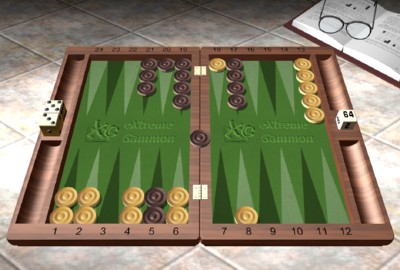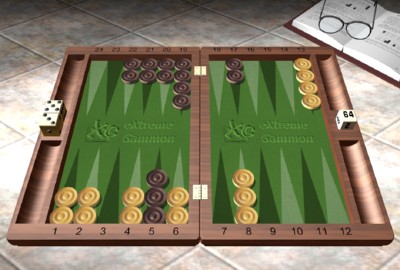Cash game. Center cube. White on move.

Should White double? If he doubles, should Black take or drop?
Here’s an interesting cube position. Black has an anchor on White’s 5-point. White’s ahead in the race by 21 pips, 117-138. White also has a pretty good 4-point board. Black’s remaining checkers are in play and his board is in the process of forming.
Those features are routine and we see them in most holding games. But this position has a few unique features as well.
> Black’s on the bar.
> White doesn’t have a point in his outfield to serve as a landing spot.
> Black’s home board still needs some work before he’s ready to hit a shot.
In the absence of these features, we’d have no trouble with this position. Take a look at Position 148A, for instance:
Position 148A: Center cube, White on roll.

Position 148A is a well-known position type. White leads by 20 pips in the race, Black’s not on the bar, and Black’s home board is in good shape. White has a good landing spot for his outside checkers on the 8-point. It’s a trivially easy take. The double/no double decision is the hard one, because White has very few market-losers. The four big doubles (66, 55, 44, and 33) which clear the midpoint are market-losing threats, but that’s about it. White actually has a very small double now, but he can’t make a big mistake either way.
Now let’s look back at our original position. White is worse off because he lacks that landing spot in his outer board, although he has some threats to make it. Black is worse off because he’s on the bar, and his home board hasn’t come together yet. How do these factors affect the outcome?
The situation in Black’s home board is a plus for White. Until Black enters and covers his 5-point, White doesn’t have much to worry about and can take some small chances to improve his position.
Being on the bar is a negative for Black. Although Black’s a favorite to come in each turn, White will probably get a couple of turns where he can take some small chances to consolidate.
Not having a landing spot is a big deal for White. He badly needs a point like the 7-point or 8-point so he has some chance to move off the midpoint without constantly having to break his board when he rolls small numbers. However, he already has a landing spot slotted, and about half his rolls will let him make the 8-point right away.
The upshot is that these factors roughly balance out, and your judgment on Problem 148 should be very similar to 148A: easy take and a small but correct double. The doubling decision is easier in Problem 148 because White actually has a fair number of market-losing sequences: any roll that makes the 8-point, followed by a dance for White, will either lose White’s market or bring the position very close to a pass.





